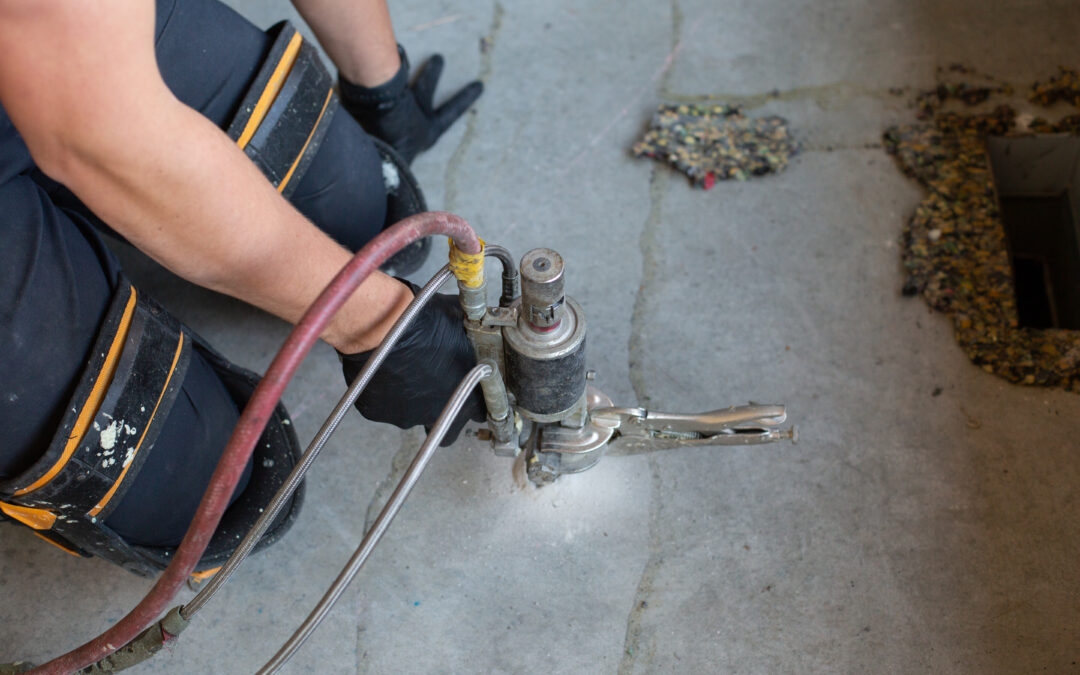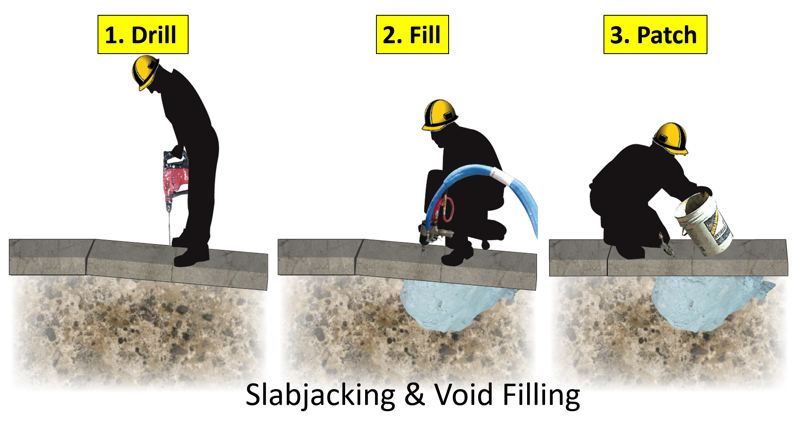If you’ve noticed uneven sidewalks, cracked driveways, or a garage floor that’s sinking on one side, you’re not alone. Concrete settling is a common problem—especially here in Central Illinois where weather and soil conditions can wreak havoc on concrete slabs.
The good news? You don’t always have to tear out and replace your concrete. Slabjacking is a cost-effective, efficient method to restore your surfaces without the mess of a full replacement.
Let’s break down what slabjacking is, how it works, and if slabjacking is right for you.
What Is Slabjacking?
Slabjacking—also called concrete lifting or concrete leveling—is a process used to raise sunken or uneven concrete surfaces back to their original position. It’s a smart alternative to tearing out and repouring the slab, which can be expensive and time-consuming.
At its core, slabjacking involves injecting a material beneath the concrete to fill voids and gently lift the slab. The result? A safe, even surface that looks and functions like new.
Why Does Concrete Settle in the First Place?
There are several reasons concrete settles over time, especially in Central Illinois:
-
Freeze-thaw cycles: Our winters cause the ground to expand and contract repeatedly, which shifts soil and creates voids.
-
Erosion: Heavy rains can wash away the soil under concrete slabs.
-
Poor compaction: If the soil wasn’t compacted properly when the concrete was poured, it may settle unevenly later on.
-
Drought conditions: Extended dry spells cause soil to shrink and pull away from the slab, leading to sinking.
Slabjacking corrects these issues without replacing the entire structure.
Types of Slabjacking Materials
There are two primary methods of slabjacking:
1. Mudjacking
-
Uses a mixture of sand, soil, cement, and water (known as “slurry”).
-
Pumped through small holes drilled in the slab.
-
Lifts the slab by filling the voids underneath.
-
Best for larger, heavier slabs but can be susceptible to future settling and water damage.
2. Polyurethane Foam Lifting
-
Injects high-density foam under the slab.
-
Expands quickly, lifting the slab and stabilizing the soil.
-
Lightweight, water-resistant, and cures in minutes.
-
Ideal for residential and commercial applications in extreme weather.
We recommend polyurethane foam here in Central Illinois because it performs better against our challenging climate and variable soil conditions.
The Slabjacking Process (What to Expect)
- Inspection & Estimate: A skilled professional will assess the condition of your slab and the underlying issue.
- Drilling Small Holes: Then small holes (about the size of a dime or quarter) are drilled into the affected slab.
- Material Injection: The lifting material (slurry or foam) is injected through the holes to raise the slab.
- Precision Leveling: As the slab lifts, it is monitored in real-time to ensure a smooth, even surface.
- Hole Patching & Clean-Up: Once lifted, the holes are patched and the area is cleaned—usually all in the same day.
Is Slabjacking Right for You?
If your concrete is:
-
Uneven or sloped
-
Cracking due to sinking
-
Creating trip hazards
-
Pooling water where it shouldn’t…
Then slabjacking might be the perfect solution.
Why Sealtite Insulation & Slabjacking?
We’ve been serving Central Illinois since 2004 with a commitment to quality craftsmanship and honest service. As a family-owned business, we understand the importance of doing the job right—the first time.
Our team is expertly trained in the most advanced system of slabjacking available, and we’ll always recommend the best solution for your unique situation. Whether it’s your driveway, sidewalk, garage, or patio, we’ve got the tools and expertise to get your concrete back on level ground—fast.
Ready to Get Started?
Don’t let a sinking slab turn into a bigger, more expensive problem. Contact Sealtite Insulation & Slabjacking today for a free estimate and let us help you restore your concrete—safely, affordably, and with minimal disruption.

